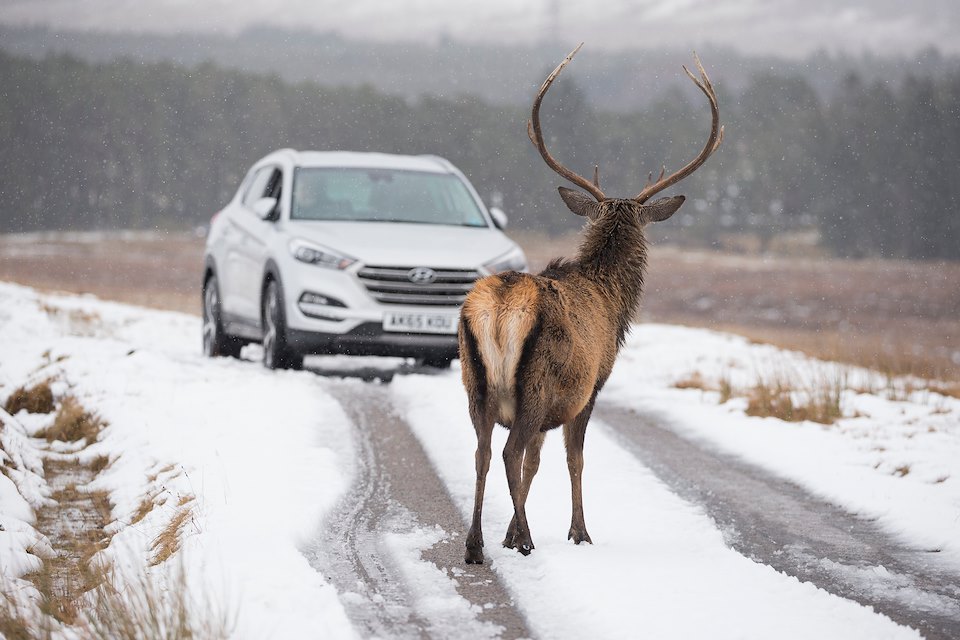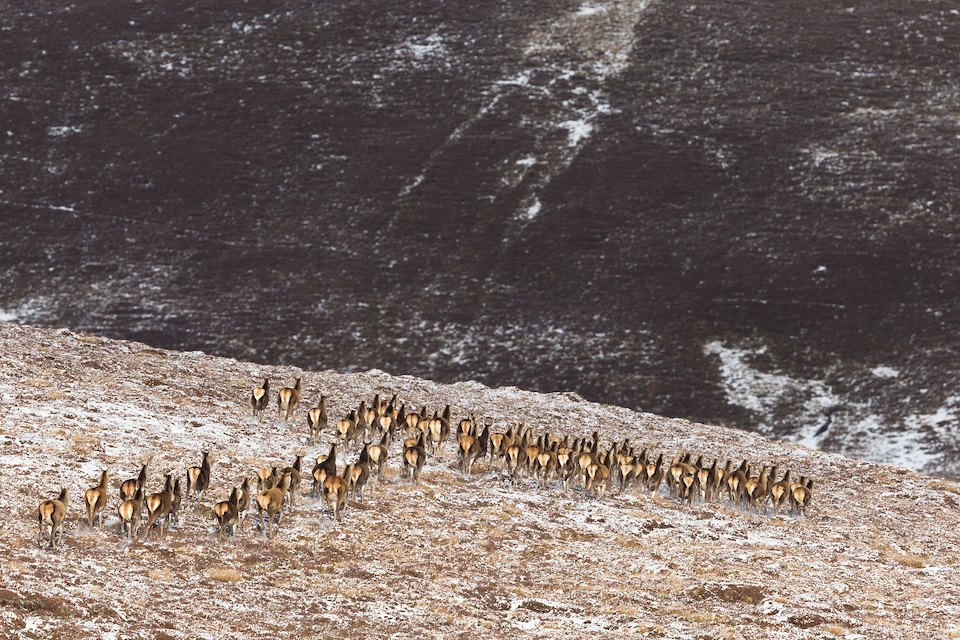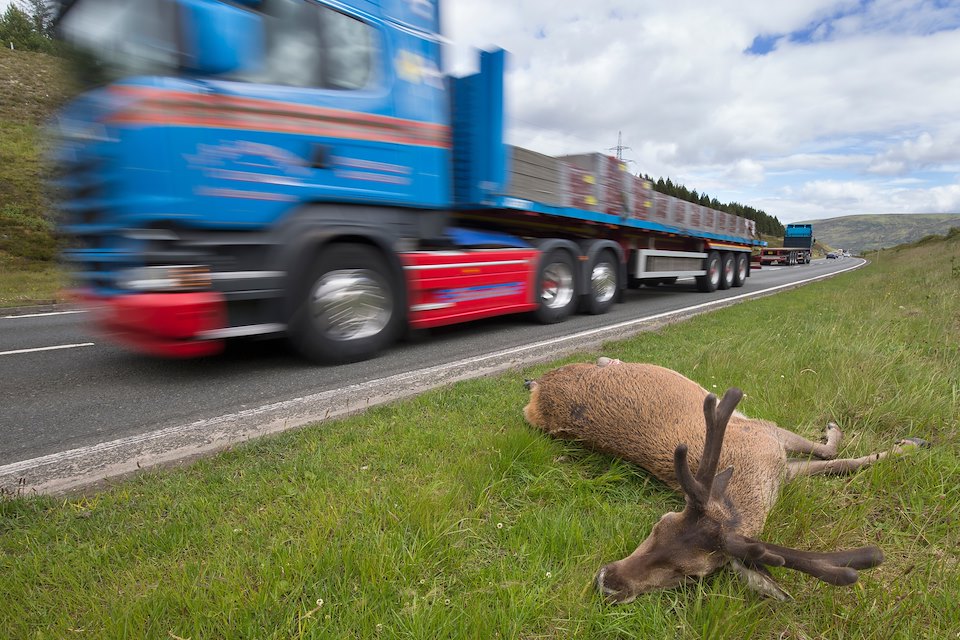The Trouble With Reintroductions
Opinions on the return of missing species vary widely, but in the face of increasing biodiversity loss and calls for a wildlife comeback, should the question around reintroductions be shifting from ‘whether’ to ‘when’?

Rewilding can occur along a spectrum, from making more space for wild nature in a city garden to landscape-scale habitat restoration projects. Across these different scales, rewilding is increasingly popular, inspiring people with its promise of hope and renewal. However, when conversations turn to the subject of wildlife reintroductions, it isn’t long before trouble starts.
Wild animals can naturally recolonise old haunts when they are freed from humanity’s negative influences and barriers to movement are removed. Such ‘unassisted’ comebacks are typically less controversial than deliberate reintroductions. This may be because the returning animal remains relatively hidden – staying out of sight and out of mind – or because the process is more gradual, beginning with a few explorative individuals dispersing from established populations.
Deliberate reintroductions establish a clear pathway for blame.
In Italy, I spoke to a local who was delighted to have filmed the nocturnal comings and goings of a wolf pack on the outskirts of his village, but who swore me to secrecy. Local hunters and farmers were still unaware of these wolves and there had been no furore accompanying their arrival. In Botswana, I interviewed pastoralists living less than a mile from a wild dog den that was used continuously for three months while their human neighbours remained entirely unaware of the dogs’ presence.
In Italy, as well as other parts of mainland Europe, wolves have slipped over borders and melted into the landscape almost unnoticed.
In Italy, as well as other parts of mainland Europe, wolves have slipped over borders and melted into the landscape almost unnoticed.
The other advantage of natural recolonisation is that there is nobody to blame if conflicts do arise, encouraging a more fatalistic attitude to the vicissitudes of accepted natural events. By contrast, deliberate reintroductions establish a clear pathway for blame, breeding resentment and potentially making the animal emblematic of unwanted interference by perceived outsiders.
We can hardly afford to wait decades to re-establish healthy living systems.
So, is natural recolonisation always best? Some conservationists have argued as much. The red kite’s resurgence across Britain was aided by managed reintroductions but critics have since argued that the kites could potentially have recovered on their own, saving money and perhaps attracting less negative attention. Reintroduced animals are even seen by some purists as less wild. Furthermore, with the growing trend for unofficial releases, from ‘beaver bombing’ to ‘butterfly boosters’, even natural recolonisation events can sometimes be viewed with suspicion.
And yet, while red kites may have eventually staged a comeback from their Welsh stronghold, we would surely not have seen the same breadth and speed of recovery without deliberate reintroductions. This highlights a key argument in favour of interventions: the question of urgency. In a nature and climate emergency, we can hardly afford to wait decades to re-establish healthy living systems. Why allow another generation to pass before missing species can return? Why condemn our children to grow up in a world still dulled by the loss of so much richness?
Opponents to reintroductions may suggest that a candidate species isn’t globally threatened, so why bother? But then, don’t we all have a right to the benefits that arise out of healthy biodiversity, from the simple joy of watching a swooping red kite to the myriad ecosystem services supported by keystone species like beavers? Reintroductions foster interest in our natural heritage, rebuild nature connectedness and inspire hope: why wait?
As a rule, the more recently a species disappeared, the easier it is to garner support for its return. Following longer absences, we tend to forget what it was like living with an animal, how we coped with any challenges it presented and, indeed, what we may have once enjoyed about having that animal around. Of course, species that have persisted into our modern landscapes may also inconvenience us, cost us money, or even harm us – deer can damage crops, cause car accidents and may contribute to the spread of Lyme disease – but when we’re used to these issues, we are more willing to accept them.



Arguably, red deer cause us more inconvenience and indeed, serious injury, than other recently reintroduced species, but their familiarity and iconic status, ‘protects’ them from the intolerance that besets ‘new’ species.
‘Britain has changed,’ people say.
‘We have changed.’
By contrast, the challenges posed by reintroduced species are less freely tolerated, largely because people’s perception of which animals have a place in their neighbourhood is shaped by the community they grew up with. Golden eagles? No problem. Sea eagles? No thanks. Furthermore, this baseline is further eroded with each passing generation as we continue to whittle away our natural heritage. Eventually, questions arise as to whether certain species should be considered native at all. ‘Britain has changed,’ people say. ‘We have changed.’
How long an animal has been missing then becomes a subject of debate, but the precise timing of even recent extinctions is often difficult to establish. In the case of secretive species like the lynx, proving the exact date of the last individual’s demise is impossible. This vagueness breeds confusion. During a recent debate about lynx in Holyrood, Kenneth Gibson MSP claimed the last Scottish lynx had been exterminated in 1760, while Edward Mountain MSP suggested that lynx had in fact been extinct in Scotland for 500 years. Now, he added, was ‘just not the time’ to bring them back.
The real issue is not the relationship between species A and B, but the impoverished state of the systems they find themselves in.
Another common objection is the suggestion that reintroducing one species might harm surviving populations of another. For example, reintroducing lynx is often claimed to pose a threat to capercaillie or wildcats, even though there is no evidence to support these claims. Indeed, the resurgence of lynx in Scandinavia has been accompanied by a rise in capercaillie numbers, believed to be a consequence of the lynx’s predation of foxes. Others claim that beavers threaten riparian woodland, that otters threaten fish, or that sea eagles negatively impact golden eagles.

Reintroductions are often framed as a choice between an existing species – often rare or threatened – and a ‘new’ species. The affinity that many people have with capercaillie, for example, often prejudices their view on the merits of returning lynx.
What such objections fail to appreciate is the holistic nature of healthy ecosystems. Having become used to tackling conservation one species at a time, little thought is given to what happened in the past when all these species lived alongside each other – or indeed, how they continue to coexist in other places today. Of course, where ecosystems have been fundamentally changed, interactions between species may become more problematic, but the real issue in all these cases is not the relationship between recovering species A and threatened species B, but the impoverished state of the systems they find themselves in.
It goes without saying that it is appropriate that reintroductions are subject to detailed scrutiny, but we should also be wary of the process becoming overly onerous or repetitive. After initial legal objections were overcome, beavers were subject to a long and expensive trial reintroduction in Scotland, with Knapdale in Argyll chosen primarily for its presumed natural containment and minimal potential for conflicts, rather than any ecological or sociological insights it might offer, or its relevance to possible future reintroductions.
Beaver reintroductions into new catchments are still subject to exhaustive applications.
Ironically, it has since been argued that it was the ‘illegal’ beavers on the Tay that most advanced policy decisions around the animal’s future, rather than the sanctioned reintroduction at isolated Knapdale. Today, the beaver has finally been recognised as a protected native species in Scotland but reintroductions into new catchments are still subject to exhaustive applications. These feel especially absurd when compared to the relatively straightforward process of releasing non-native gamebirds.

It is calculated that 47 million non-native pheasants are released into the landscape each year for recreational shooting, with none of the costs and bureaucracy faced by the reintroduction of native species.
Reintroductions must also consider the availability of food and habitat as part of the statutory assessments needed to secure a licence, but the objection that current habitat availability in Scotland represents a critical barrier to reintroductions is largely misplaced. Indeed, Scotland has plenty of suitable habitats for beavers, lynx or even wolves. More bizarre is the idea that people would need to move out to make space for animals like lynx. The reality is that most animals are far more tolerant of human neighbours than we are of them, and many survive in far more densely populated landscapes across Europe. They don’t need so-called wilderness, just acceptance.
Reintroduction projects can be expensive and concerns are sometimes expressed that limited funds could be better spent. Critics bemoan the lack of spending on surviving species that may be less charismatic, less visible, or simply less furry than preferred reintroduction candidates. This may be true, but it is also based on the false assumption that there is a fixed pot of money available for conservation, and that spending on species A somehow robs funds from species B.
In truth, it’s far from guaranteed that a person who donates £10 to a lynx appeal would otherwise have donated that £10 to dragonflies. It’s more likely that tenner would have been spent on something else altogether. Furthermore, the funds raised for charismatic species can have knock-on benefits for other species, especially when their return catalyses wider system recovery. With just 4% of the money spent by UK charitable trusts and foundations currently going to environmental or climate causes, our efforts would undoubtedly be better spent securing more funding for conservation, rather than bickering over the crumbs we are currently afforded.
The one objection to reintroductions that gets the least attention is arguably the most valid: have the threats that led to the missing animal’s original disappearance been adequately reduced? We know that our surviving wildlife continues to face threats from pollution, habitat destruction, invasive species, exploitation and direct persecution. But this doesn’t mean we should abandon reintroduction plans. It only means that we should redouble our efforts to tackle these threats, with the goal of facilitating biodiversity-boosting reintroductions only adding further motivation.
Support Scotland's Wildlife Comeback
SCOTLAND: The Big Picture is committed to driving an increase in abundance and diversity of wildlife in Scotland.
As well as expanding the range of existing species, such as aspen and beavers, we have core projects dedicated to reintroducing Eurasian cranes and lynx.
How can you help?
Support our Wildlife Comeback appeal! By donating today, you can help increase the abundance and diversity of wildlife across Scotland.
DONATE TO SCOTLAND’S WILDLIFE COMEBACK


